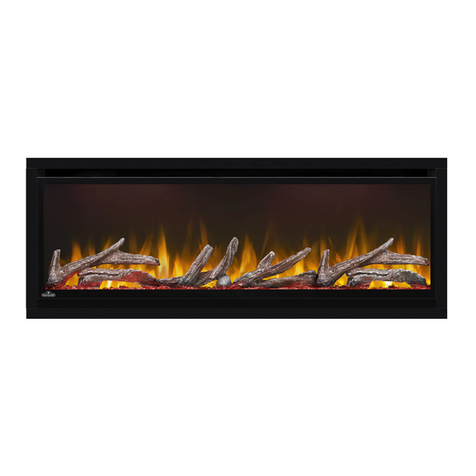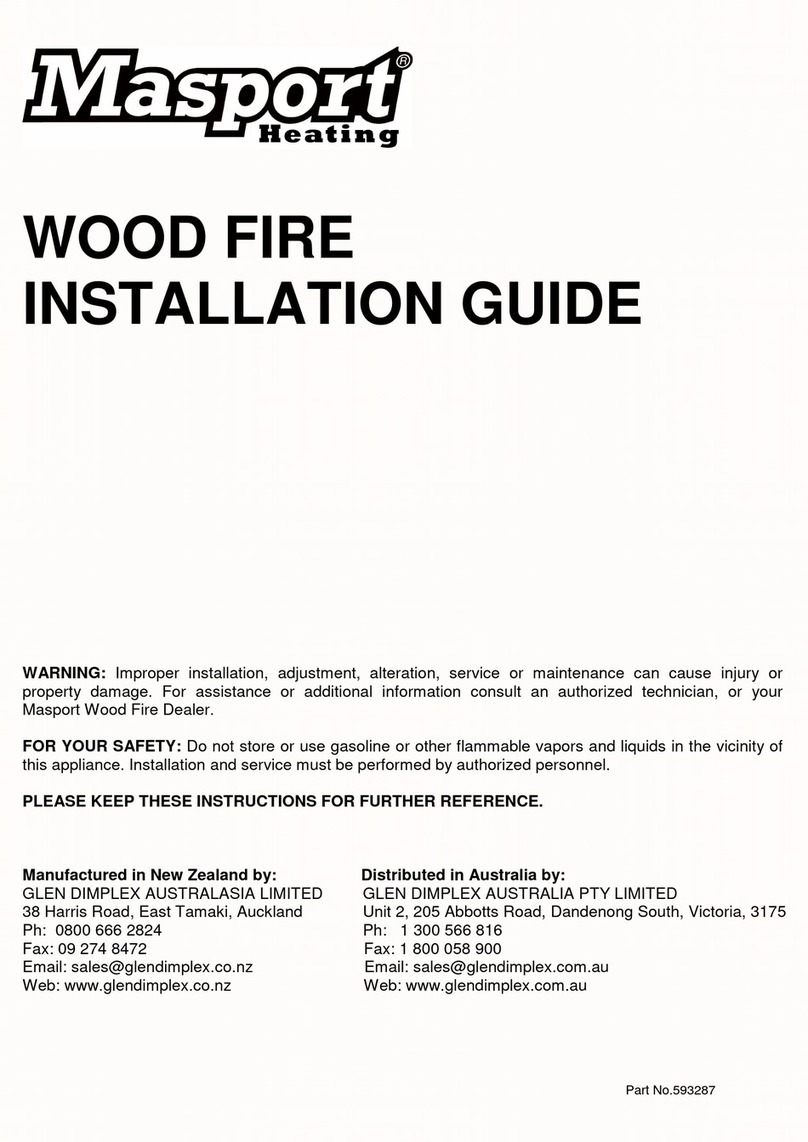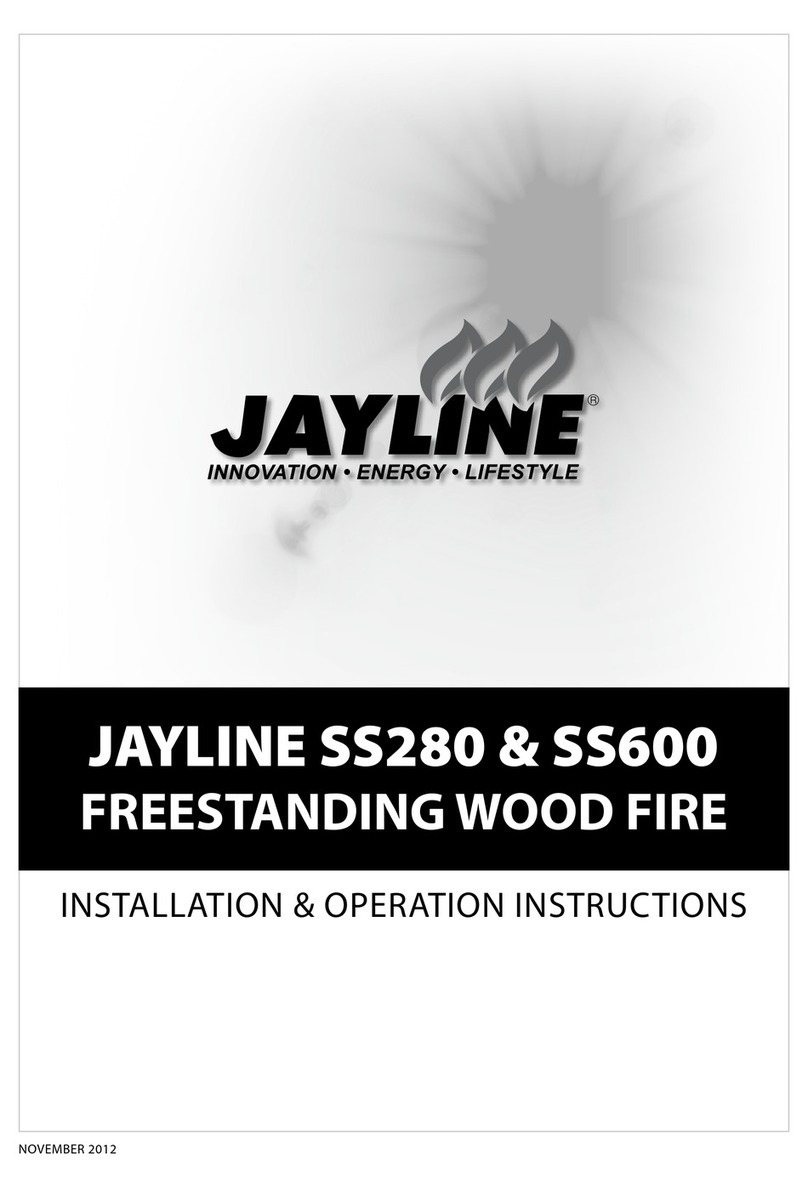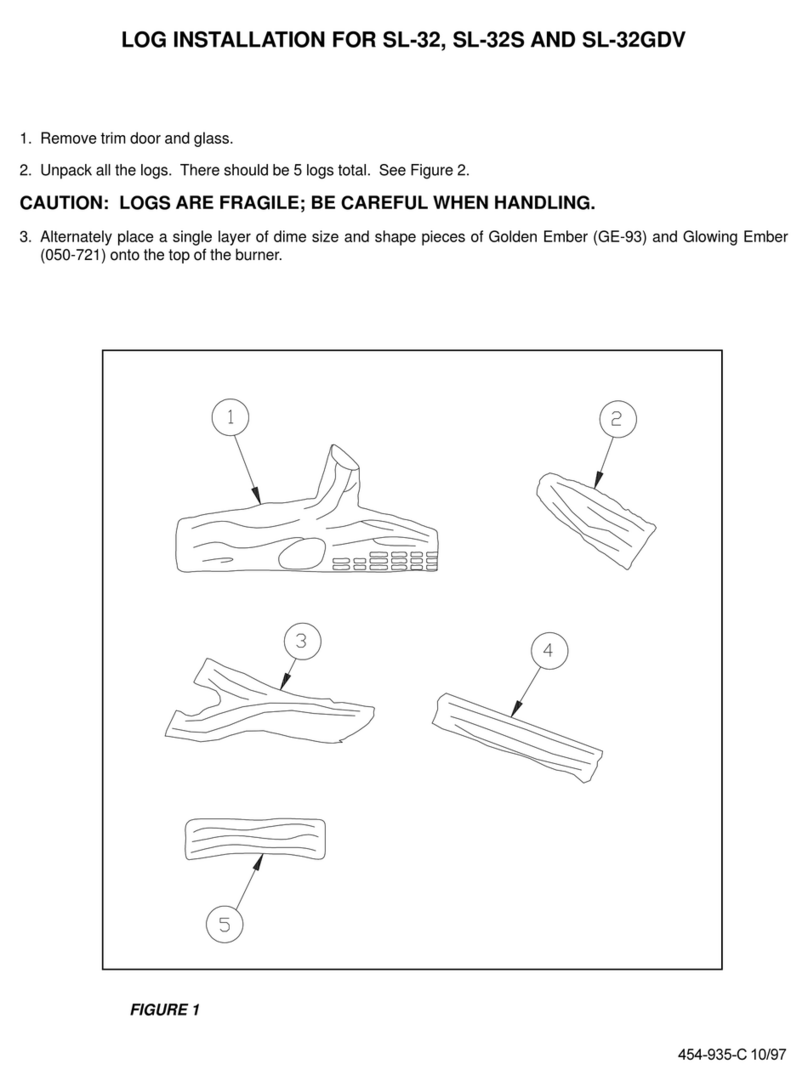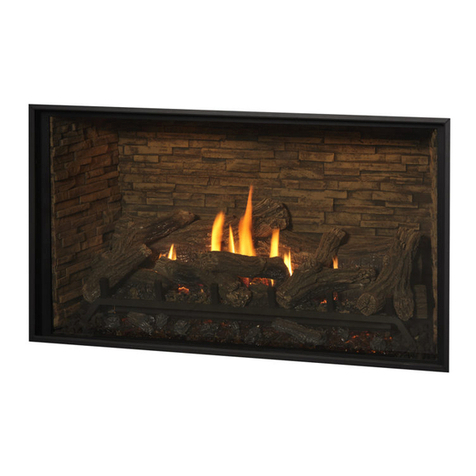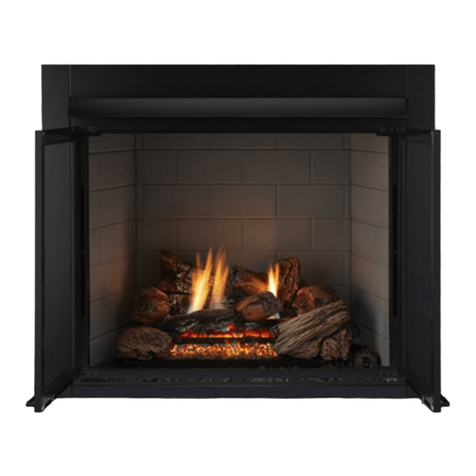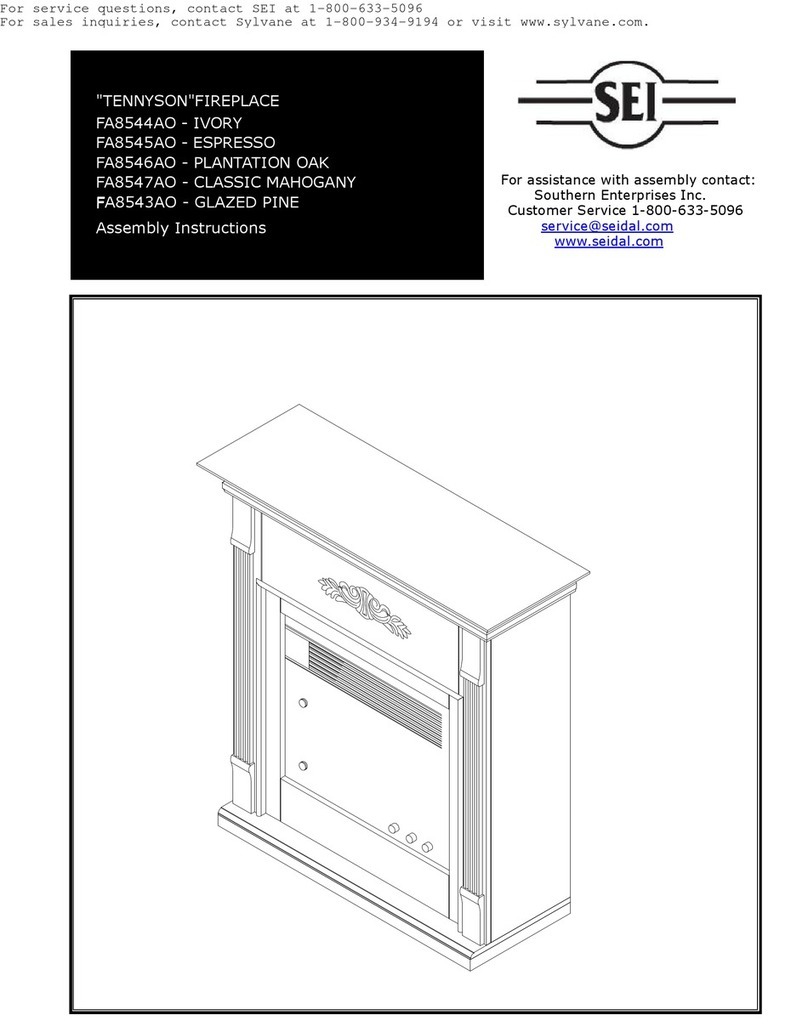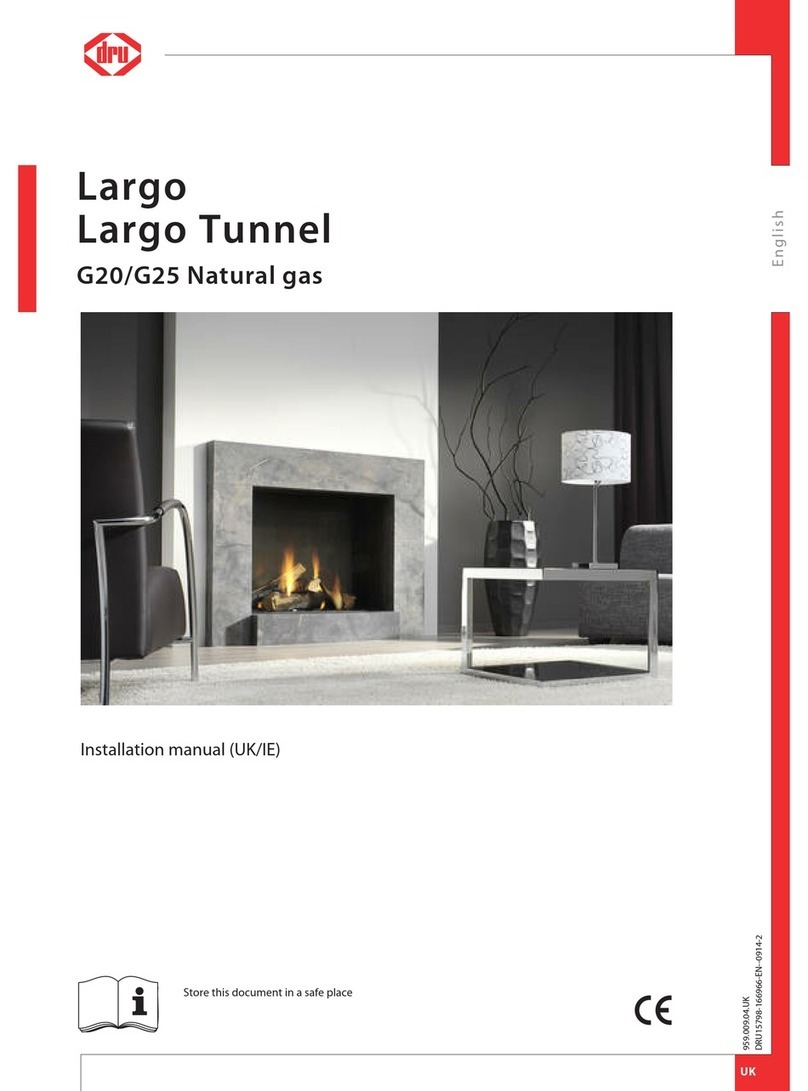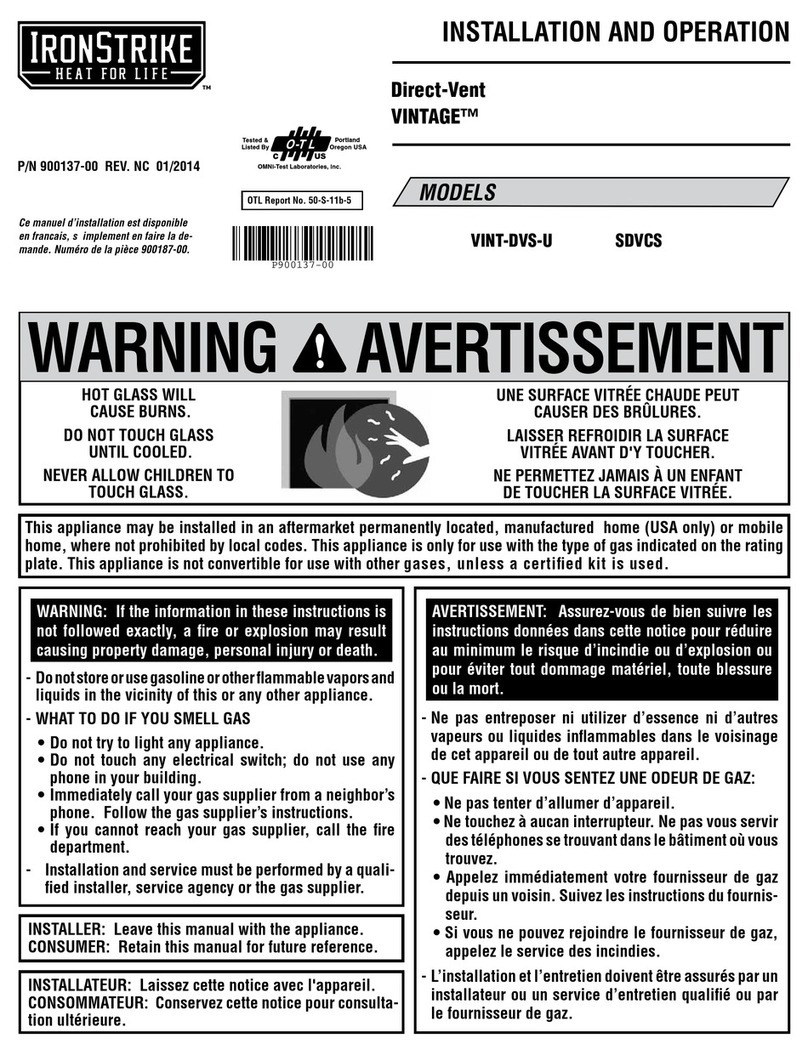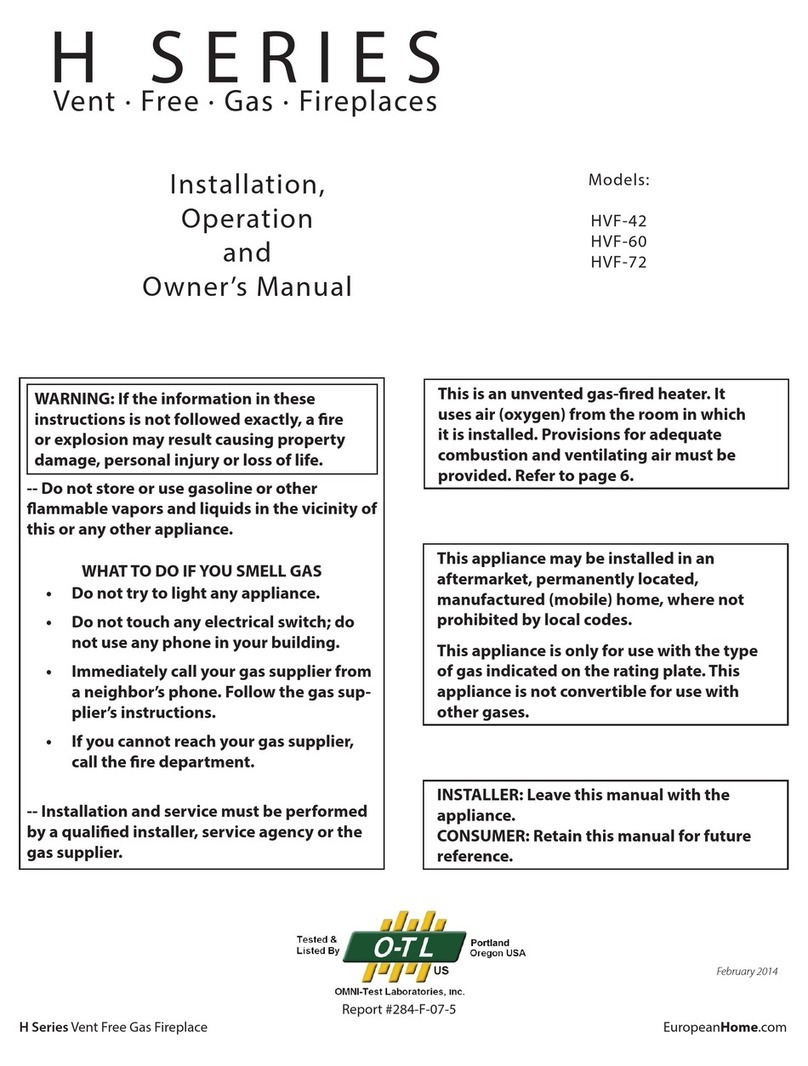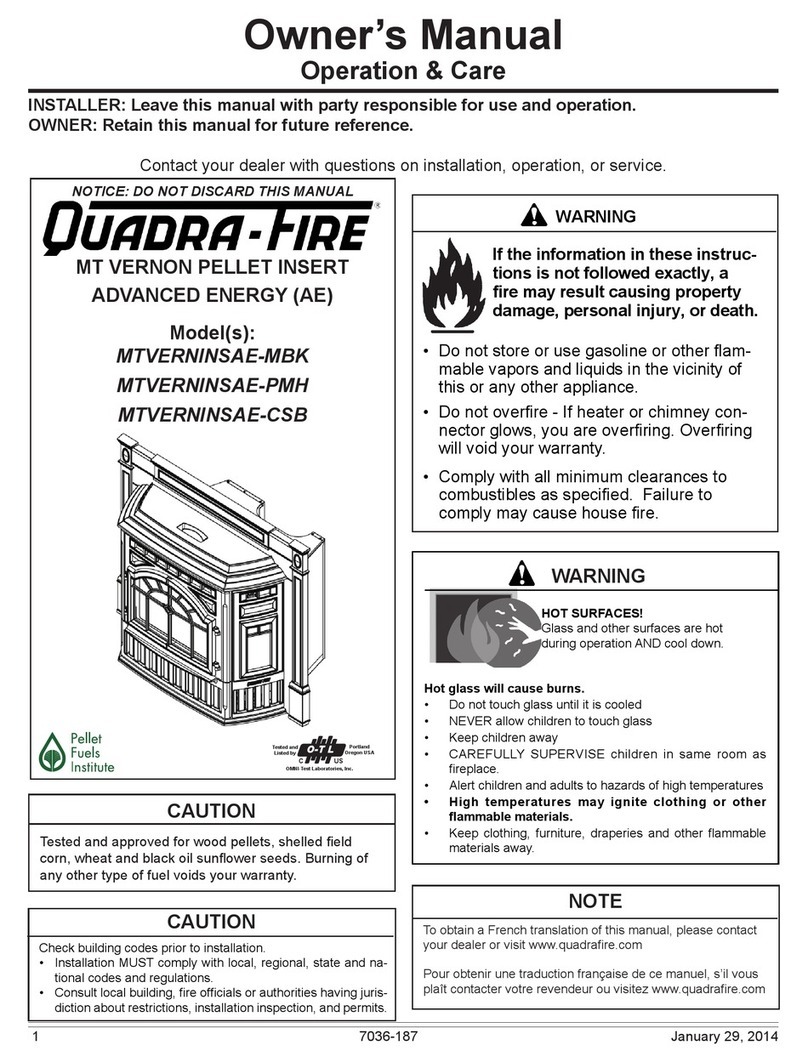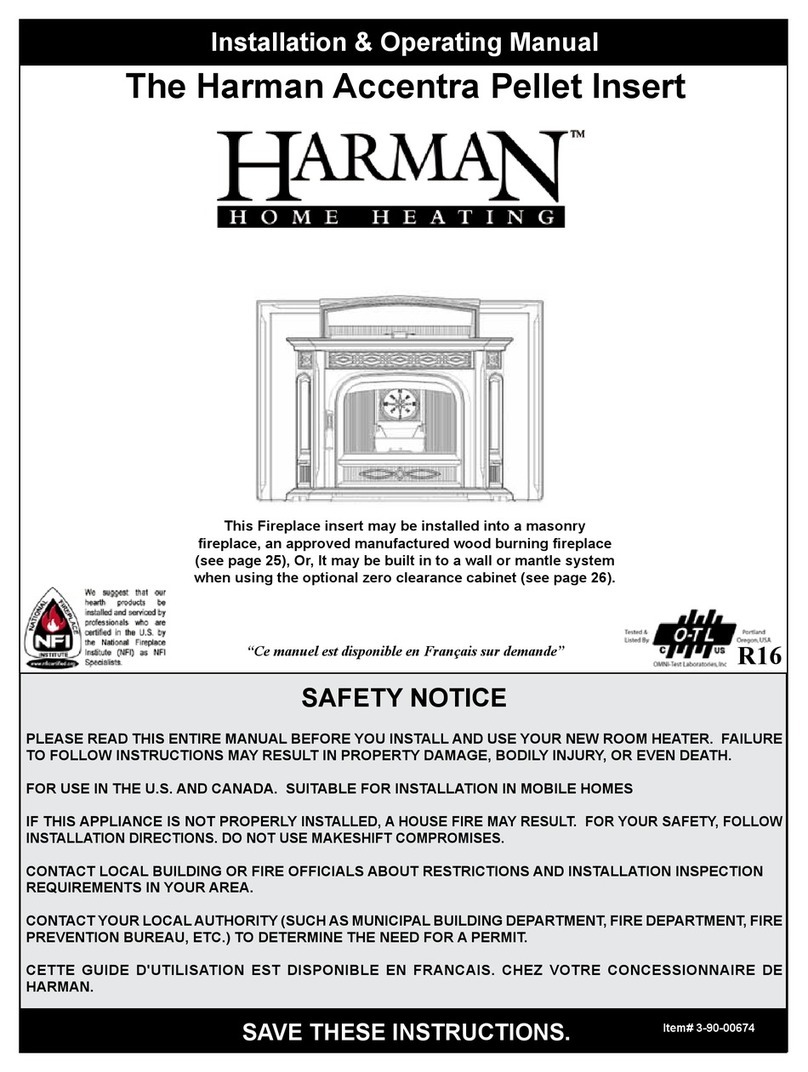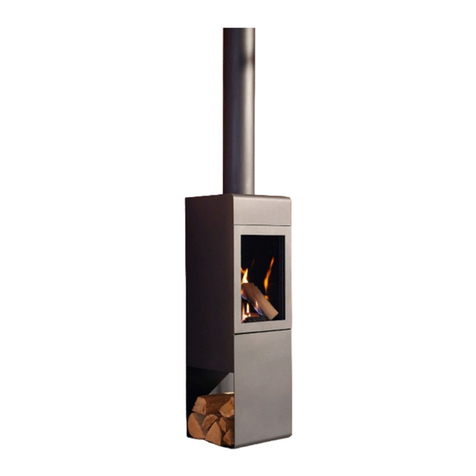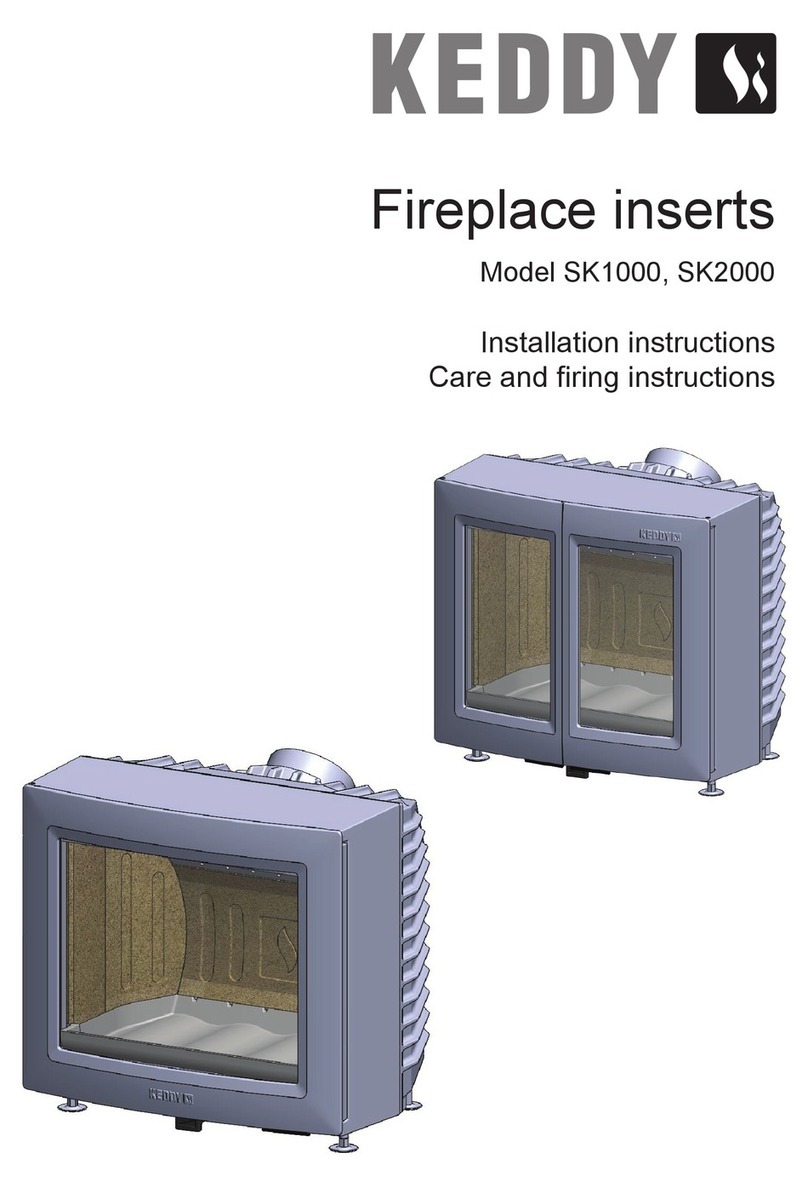Wood quantity at normal firing
Insert model 100 2 kg/hour
Insert model 200 2,5 kg/hour
Wood quantity at maximum firing
Insert model 100 3 kg/hour
Insert model 200 3,5 kg/hour
Firing instruction
1. Open the door. Put in some crumpled newspaper
or relighters.
2. Put in 3,0 kg of kindling. Pile up the wood crosswise.
3. Turn the dampers to startmode (see ill below) and
light the re.
(If the chimney is cold or if there are unfavour-
able weather conditions, you may need to keep
the door ajar during the first five minutes in or-
der to establish a satisfactory chimney draught.)
4. Let the rst re burn down with full damper. This is
in order to allow the stove to reach its operating tem-
perature quickly. Light a new re of the desired size.
Wait a couple of minutes until the re has started
burning properly. Then turn the damper to the left,
until you have achieved a calm and harmonic re.
Note! The reason why we want to achieve the op-
timum operating temperature in the stove quickly
is that the stove works most efficiently at this
temperature. This minimises the emissions and
maximises the heat generation.
To reach the startmode position you need to push the damper knobs
inwards and turn at max position.
GOOD TO KNOW
Since it can take some time for a cold chimney to
start working properly, i.e. to force the smoke in the
right direction, you can light a couple of sheets of
newspaper and hold them up in front of the smoke
shelf in the hearth. In this way, you eliminate the
downdraught and avoid the nuisance of smoke ente-
ring the room in the initial stage.
CARE AND FIRING INSTRUCTION Continue.....
If the premises are equipped with mechanical ventila-
tion, i.e. if there are one or more fans to evacuate the
air from the building, there could be such a large ne-
gative pressure in the building that it could be dicult
to light the stove. As a suggestion, you could turn o
the ventilation temporarily or open a window until the
negative pressure has dissipated.
Firing with too coarsely chopped wood or with too
little oxygen supply, so-called smoulder combustion,
will increase the amount of soot and tar wich in turn
can lead to a re in your chimney.
REMOVAL OF SOOT AND MAINTENANCE
Soot must be removed at least once per season. The
soot from the chimney and the connections should be
removed by a chimney sweep. The smoke shelf must
be removed during sweeping.
If the glass becomes sooty, it is best to use a special
soot remover, which you can buy from your local
stove dealer. Never use detergents containing abra-
sive materials. This damages the glass.
TIP!
Soot stains on glass are easily removed as follows:
1. Moisten a piece of soft kitchen paper with water.
2. Rub some ash from the hearth onto the kitchen
paper.
3. Remove the soot stain by rubbing with the kitchen
paper.
When emptying the insert, the ash should be placed
in a steel vessel.
Pay attention to the risk of fire
when you throw out the ash, as the ash may con-
tain live embers for a very long time.
Important! If you experience a re in your chimney
you must close the doors and dampers. If needed
call the re department. After a re in your chimney
a chimneysweeper need to inspect your installation
before taking it into renewed use.
www.keddy.se
Rev 1, 2012 08 31
STARTMODE STARTMODE
MAX
MAX
NORMAL NORMAL
CLOSEDCLOSED
